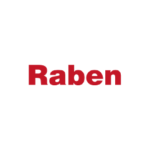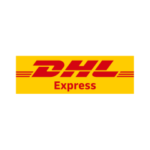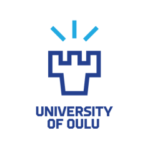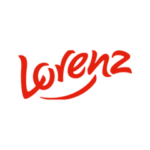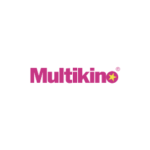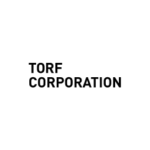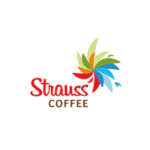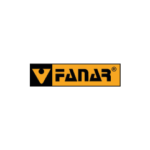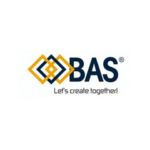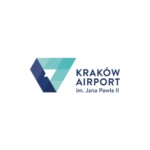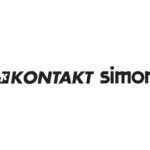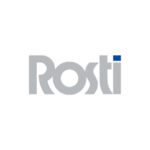Currently, we are often faced with a process of concentration of multiple entities within a single group, which involves numerous challenges, including the realisation of two seemingly irreconcilable needs. On the one hand, there is the need to ensure central, efficient management of the group and, on the other, to maintain the ability to manage each company individually.
This is difficult to achieve without a proper IT system that provides multi-company functionality. Multi-company functionality is primarily about streamlining the process of information and document flow between group entities. This, in turn, creates opportunities that can be translated into real benefits in terms of optimising employment, improving customer service, standardising processes and reducing costs.
The multi-company functionality in the XPRIMER system – developed on the basis of many years’ experience in building and implementing IT solutions for customers – is, from a technical point of view, a completely new system architecture. It makes it possible to support multiple group entities using a common IT infrastructure.
What does this look like in practice? What are the benefits of using a multi-company support system? Below are four examples of workforce optimisation, improved customer service quality, standardised and unified processes and reduced costs associated with administrative support.
Case 1: How to optimise employment through better work organisation?
Case description:
The group consists of several entities with several thousand employees in different companies. Although they usually work closest to their place of residence, there are cases of posting to other locations – depending, for example, on the need for staff in a particular location. Some employees are employed under employment contracts, others under civil law contracts. Occasionally, some employees have part-time contracts with several entities within the group. Several companies in the group work with temporary employment agencies.
Challenge:
The challenge in this case is the proper planning and recording of working time at group level. Working time schedules should be planned in such a way that first of all optimal use is made of the staff resources at hand, and only after that a new hiring should be planned.
Solution:
The new multi-company architecture in XPRIMER enables to look at the employee differently than before. The employee becomes an overarching element in relation to the group companies. His or her competences and availability can be managed from a group-wide level, depending on how labour requirements change in the individual companies.
In the XPRIMER platform, we have access to an employee’s terms and conditions of employment, working time limits, scheduled absences, hours worked – in other words, the key information that allows us to assess their availability. Depending on his or her competences and other constraints, such as the possibility of being posted to other locations within a specific area, we can plan his or her work within the different companies of the group in the most efficient way. The system also takes into account the requirements and restrictions of labour legislation, e.g. it verifies that the planned schedule does not exceed the hours limit and that all code breaks are observed. The recording and reporting of hours worked and absences enables the payroll accounting process to be automated.
A global view of the employment structure in a group of companies allows labour requirements to be met in the first instance by resources available within the group. Only when this proves insufficient the resources of temporary employment agencies are used or external recruitment initiated, which translates into real savings in labour costs.
Case 2: How to improve customer service by process continuity?
Case description:
A group of companies is formed by several companies with complementary business profiles, one of which is involved in the production of structural components, the other in the assembly services of these structures. When an order is received from a customer, the service company transfers the order to the production company. This carries out the orders for the production of the structural elements, which, once manufactured, are delivered to the construction site through the service company, which is responsible for organising transport, assembly and fulfilling warranty obligations. The entire project is supervised by a project manager employed by the assembly company.
Challenge:
A process in which one company is the main contractor of the client’s investment, while other companies are responsible for the implementation of the outsourced scope, acting as subcontractors, involves the need to organise the exchange of a lot of information and documents between these entities. The companies must ensure an efficient flow of orders, technical, execution and assembly documentation, agreement protocols, acceptance protocols, delivery notes, warehouse documents, invoices, etc. In addition, there is a need for the project manager, who is an employee of only one of the companies, to have an overview of the entire process. Any problems, delays or discrepancies must be resolved on an ongoing basis in order to comply with the terms of the contract with the client. Sometimes the companies are working on a dozen or more projects of this type at the same time.
Solution:
In this case, the multi-company feature in XPRIMER allows the entire process to be streamlined. The circulation of documents between companies within the same system provides a wide spectrum for automation. For example: a despatch document from one company can result in the automatic generation of a reception document in another; with the transfer of the manufactured construction elements from the production company to the assembly plant, an invoice can be generated which automatically reaches the service company as a purchase document in electronic document workflow. A central repository of project-related documentation, with access determined by the level of authorisations held, allows for the effective implementation of internal guarantee obligations by each of the companies in the group.
Thanks to the use of multi-company functionalities in XPRIMER, continuity is ensured across the entire customer service process. This reduces the risks associated with the timeliness of the entire project by enabling a faster response to risks. With complete knowledge of the process flow, possible decisions to switch priorities for the implementation of individual projects have a rational basis. Multi-company feature in this case therefore has an impact not only on streamlining administrative processes and reducing associated costs, but also on a better level of customer service and a better market image for the group of companies.
Case 3: How to improve the performance of the Shared Service Centre through proper administration of permissions?
Case description:
Within a group of companies dealing with different activities, there is a Shared Service Centre (SSC). It is a separate entity that is responsible for the administrative service of the other companies in the areas of finance and accounting, human resources and payroll, health and safety, cleaning services, legal services and IT. In particular, the SSC is responsible for running and accounting for HR processes, including time accounting and payroll.
Challenge:
The IT system architecture should enable the SSC to process the data of all group companies in such a way that each company’s data is kept separate and properly identifiable, which is needed, for example, for public and legal settlements, including sending declarations to the relevant institutions. At the same time, it should be ensured that the authorisations of employees are properly administered in accordance with the tasks assigned to them.
Solution:
Using a common IT infrastructure with a system with a multi-company feature, specific SSC employees have rights and access to the data and documents of all group companies, depending on their assigned tasks and responsibilities. For example, SSC employees handling HR administration for the entire group work in a multi-company system to account for the working time and payroll of group-wide employees. In the same system, but with permissions limited to the data and documents of a specific entity, work managers employed by this entity and operationally supervise teams of employees. They are performing there, among other things, activities related to planning and recording of working time, whose results (working time data) feed the wage settlement process.
In addition, the use of an appropriate multi-company system provides an opportunity to unify and standardise business processes within the group and, through their integration and automation, to optimise the group’s administrative service costs.
Case 4: How to standardise processes and reduce administrative costs?
Case description:
A group of three companies operates in a similar field with some business overlap. The group was formed through an acquisition of entities to consolidate the market. One of the companies is the parent company. Each of the companies has its own client group, its own employees, its own procedures and its own way of doing things, developed over the years. There is duplication of administrative activities within the group, which are similar for each of the companies. In addition, one of the companies provides its own accounting, financial and payroll services, while the other two outsource these services. Each company has a separate IT infrastructure from a different supplier, with different requirements and independently updated, which generates additional costs.
Challenge:
The primary objective of the group owners is to reduce administrative costs and improve the operation of the companies in the group, including the proper flow of information.
Solution:
The first step is to unify the IT infrastructure and the procedures related to its management. The organisation of a common server room / Data Centre and the associated migration of all systems used by the individual companies in the group already allows for a significant reduction in infrastructure maintenance costs and becomes the basis for the successive unification of business processes across the group.
The next step of business optimisation may be the use of a unified system guaranteeing support for multi-company structures and thus enabling consolidation of the group’s administrative processes. The implementation of such a project will reduce administrative costs by organising a common unit for the group’s administrative services, which will include the relevant employees who have previously dealt with accounting, human resources and office services in each company. An example of this could be the introduction of a common document flow within the group within a single system, which would enable the keeping of a register of incoming documents in one place, where they would be recorded and assigned to individual companies. There is therefore no need for three separate secretariats/offices.The documents, already in electronic form, are then sent to particular people with competences and authorisations only within the company. This type of standardisation is carried out not only in document circulation, but also in other processes – purchasing, sales, planning and working time accounting. One common system allows management to view all processes from the level of the entire group and take further optimisation measures.
In addition, the cost of maintaining a multi-company system for several entities is itself much lower than for separate systems, for example due to the lack of need to maintain integration between systems and perform multiple installations of updates. Carrying out the acquisition of another entity and effectively integrating it into the organisational and process structure of the group becomes easier than ever.
Why choose XPRIMER?
XPRIMER is an integrated and coherent IT platform that allows you to build effective business process management solutions. The multi-company functionality allows, above all, to unify and standardise processes within a group.
By managing a group of entities using a unified multi-company system, managers obtain reliable management information, e.g. by ensuring the continuity of business processes, especially when talking about processes involving several group entities (sequentially or simultaneously), and by ensuring data consistency and comparability in the context of individual group companies (standardisation).
By providing insight into the employment and workload data of all employees across the organisation, it is easy to identify areas for improvement that affect the efficient use of existing resources. This provides the opportunity to balance workforce needs. In addition, there is an opportunity to consolidate those departments responsible for administrative activities in individual companies.
The installation and implementation of a system with multi-company functionality across multiple entities is much quicker and simpler. Only one database is maintained for all entities. It is also much simpler to implement a system with a specific template to further group companies. The multi-company functionality in XPRIMER ensures easy management of licences, users and access levels within individual group companies, and software updates are carried out efficiently in one place.
Would you like to find out how the multi-company functionality in XPRIMER can help streamline processes in your organisation? Feel free to contact us >> .
Member of the Management Board of eq system








